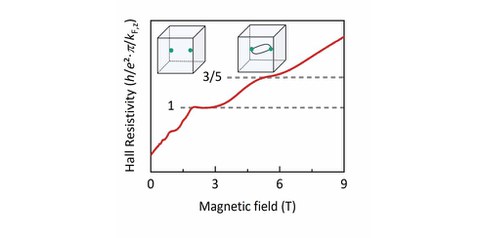Dec 01, 2020
Research: Taking correlated quantum Hall physics to the third dimension
The quantum Hall effect can be considered a drosophila for topological physics, and numerous topological states of matter can be understood building on the fundamental insights gained in connection to the quantum Hall effects over the past decades. Traditionally, the quantum Hall effect has exclusive been associated with two-dimensional metals. A team of scientists has now found signatures of an unconventional Hall response in the quantum limit of the three-dimensional bulk metal HfTe5. Their findings are consistent with strong electron-electron interactions stabilizing an unconventional variant of the Hall effect in a three-dimensional material in the quantum limit, and constitute a first step towards a broader understanding of strongly correlated topological states in three-dimensional materials. The results were published in Nature Communications.
S. Galeski, X. Zhao, R. Wawrzyńczak, T. Meng, T. Förster, P. M. Lozano, S. Honnali, N. Lamba, T. Ehmcke, A. Markou, Q. Li, G. Gu, W. Zhu, J. Wosnitza, C. Felser, G. F. Chen, J. Gooth,
Unconventional Hall response in the quantum limit of HfTe5,
Nat. Commun 11, 5926 (2020) (arXiv)

